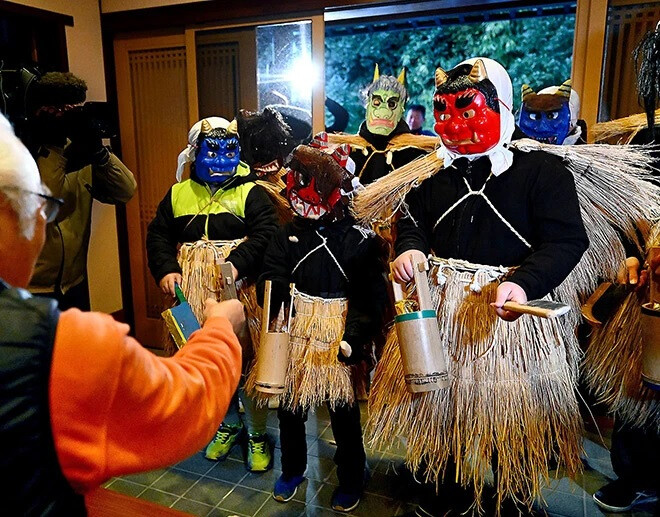
NOTO, Ishikawa Prefecture – After a year of somber silence following the devastating Noto Peninsula Earthquake, a vibrant symbol of resilience has returned to the region: the Noto no Amamehagi ritual. This ancient tradition, deeply rooted in the local culture, took place on Sunday, bringing with it not just the colorful spectacle of ogre masks and straw raincoats, but also a renewed sense of hope and community.
The Amamehagi ritual, a UNESCO Intangible Cultural Heritage-recognized event, is a powerful tradition designed to ward off misfortune and evil spirits. Children, transformed into fearsome yet benevolent ogres, visit homes, their cries of "amame" echoing through the streets. "Amame" refers to the skin discoloration caused by prolonged exposure to the warmth of a traditional irori fireplace, serving as a gentle reminder against laziness and a call to industriousness.
While normally observed in four districts of Noto and Wajima on Setsubun, the traditional day before the spring equinox, this year’s observance was understandably altered. The earthquake’s impact forced the cancellation of last year’s event, and the ongoing recovery efforts meant that only three districts, where road restoration had progressed sufficiently, could participate.
Despite the challenges, the spirit of the ritual remained undimmed. In the Akiyoshi district, seven elementary and junior high school students, clad in their ogre regalia – fearsome masks, straw raincoats, and aprons – bravely embarked on their rounds, visiting approximately 20 homes and filling the air with their spirited calls.
For residents, the return of the Amamehagi ritual was more than just a cultural event; it was a sign of recovery and a testament to the enduring strength of their community. An 89-year-old local resident expressed the sentiment of many, noting how wonderful it was to once again hear the cheerful voices of the children, a sound that had been absent for too long.
The revival of this cherished tradition is a powerful symbol of the Noto Peninsula’s determination to rebuild and heal. It underscores the importance of cultural heritage in providing solace and strength in the face of adversity. As the community continues its recovery, the echoes of "amame" serve as a reminder of the enduring spirit of the people of Noto and their unwavering commitment to preserving their rich cultural legacy.
[Copyright (c) Global Economic Times. All Rights Reserved.]






























